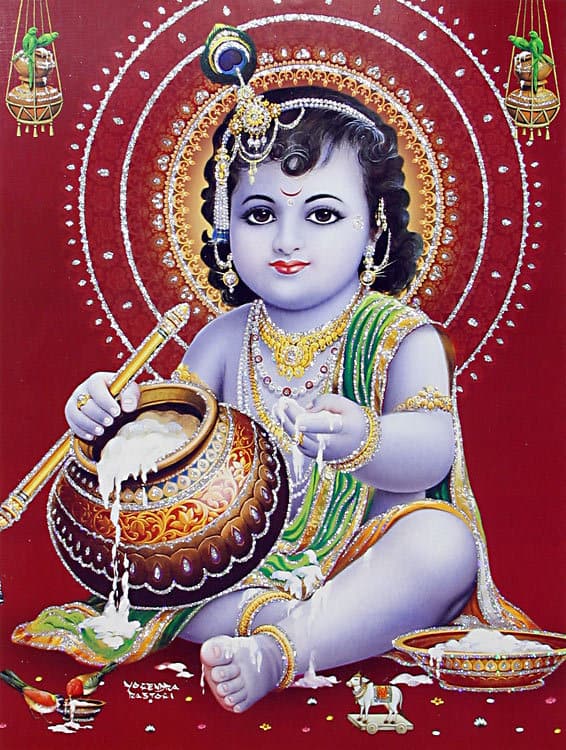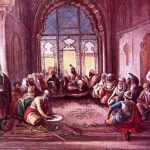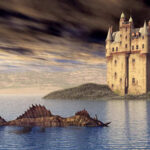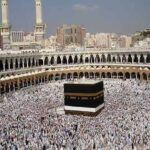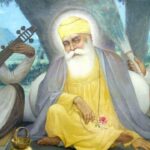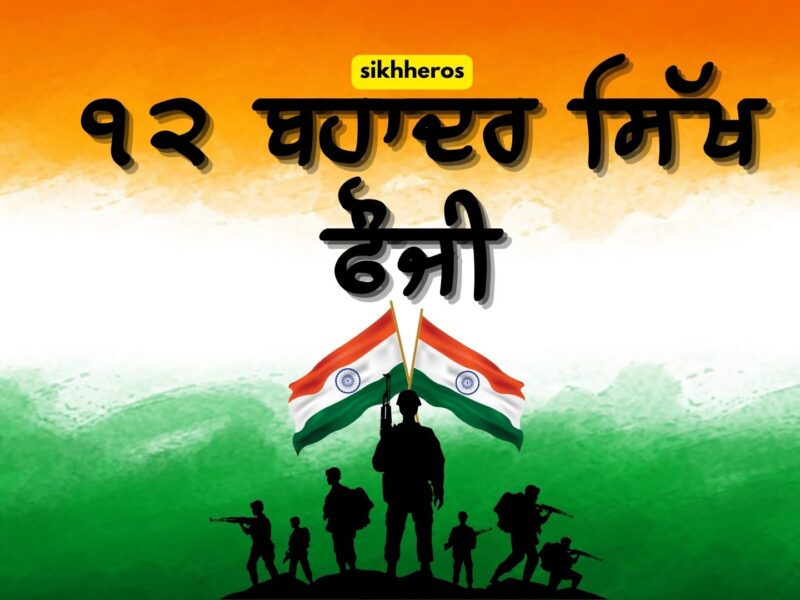Brahma
Brahma is the creator god and the first of the Trimurti. Saraswati, the goddess of wisdom, is both his consort and his shakti (divine energy). He is associated with Prajapati, the Vedic creator god. Satyaloka is his home. The god is claimed to have been born from a lotus that sprang from Vishnu’s navel. Vishnu gave him the four Vedas and told him to begin the act of creation. [9] Brahma is not extensively respected in modern Hinduism since no strong tradition arose around his worship as Vishnu and Shiva did.
Vishnu
Vishnu is the second of the Trimurti and the god of preservation. He is widely recognized as the entity most frequently concerned in mortal concerns. Lakshmi, the goddess of prosperity, is both his consort and his shakti (divine spirit). His residence is at Vaikuntha, where he rests atop the celestial serpent Adishesha. He is said to have taken ten main incarnations on Earth to restore dharma and cosmic order for the sake of the devas and humans. Rama and Krishna are the most well-known of these incarnations. His followers are known as Vaishnavas, and they consider him to be the highest deity.
Shiva
Shiva is a third of the Trimurti and the god of destruction. Parvati, the goddess of power, is both his consort and his shakti (divine energy). His residence is on the peak of Kailasha. He is frequently depicted with his two sons, Kartikeya and Ganesha. Nandi, the bull, is his mount. He is typically represented with a third eye, a crescent on his forehead, the Ganges flowing from his head, and a blue throat caused by ingestion of the kalakuta poison produced by ocean churning. His followers are known as Shaivas, and they consider him to be the greatest deity.
Saraswati
Saraswati is the goddess of knowledge and the patroness of music, art, and speech. The goddess is also thought to be the source of all poetry and literature. She is the consort of Brahma, the creator deity. She is portrayed as an elegant lady dressed in white, holding the veena (v), rosary (Akmal), water pot (kamaalu), and book (Pustaka). Satyaloka is her home. The white swan is her mount.
Lakshmi
Lakshmi is the goddess of prosperity, connected with money, fortune, and beauty, both material and non-material. She is the consort of Vishnu, the preserver deity. Her origins are essential to the Samudra Manthana, a major event in the Puranas. The goddess Lakshmi, in her ultimate form of Mahasri, has four golden arms and carries a citron, a club, a shield, and a jug with amrita, according to the Lakshmi Tantra. [15] The goddess is also thought to be calm and obedient to her consort. Her residence is at Vaikuntha. Her mount is usually an elephant, however, she can also be seen riding a lotus.
Parvati
Parvati is the goddess of power, as well as courage, fertility, and beauty. She is also known by the names Uma and Gauri. She is the consort of Shiva, the destructive deity, and Himavana’s daughter. She is thought to be the reincarnation of Sati, Daksha’s daughter who died in the Daksha Yajna. According to the Puranas, she does penance to marry Shiva, a celibate brahmachari, and the latter agrees when he discovers her actual nature. When represented with her spouse, Parvati usually has two arms, but when depicted alone, she has four, eight, or ten arms and is astride a tiger or lion.
Ganesha
Ganesha, also known as Vinayaka and Ganapati, is Shiva and Parvati’s son. He is revered as a god of wisdom and the removal of all impediments. In ceremonies, certain writings promote his devotion before any other deity. Ganesha is the main deity of the Ganapatya cult.
Deities from the Rigveda
The Trayastrinshata (‘three plus thirty’) gods are mentioned in the Rigveda. They are made up of 12 Adityas, 8 Vasus, 11 Rudras, and 2 Ashvins: Dyau “Sky,” Pthiv “Earth,” Vayu “Wind,” Agni “Fire,” Nakatra “Stars,” Varua “Water,” Surya “Sun,” and Chandra “Moon.” Vishnu, Aryaman, Indra (akra), Tv, Varua, Bhaga, Savit, Vivasvat, Aa, Mitra, Pan, and Dhata are the twelve dityas (personified deities). [17] Indra, also known as Akra, is the first of the 33 gods.
Rudras
According to the Ramayana, they are eleven of the 33 children of the sage Kashyapa and his wife Aditi, together with the twelve Adityas, eight Vasus, and two Ashvins who make up the Thirty-three gods.The Rudras are described in the Vamana Purana as the sons of Kashyapa and Aditi. [According to the Matsya Purana, Surabhi, the mother of all cows and the “cow of plenty,” was Brahma’s wife, and their coupling spawned the eleven Rudras. Nirriti, Shambhu, Aparajita, Mrigavyadha, Kapardi, Dahana, Khara, Ahirabradhya, Kapali, Pingala, and Senani are their names. [20] Brahma assigned the Rudras the eleven locations of the heart, as well as the five sensory organs, the five action organs, and the intellect.
Ashvins
The Ashvins (also known as the Nsatyas) is the medicine gods. Nasatya is also the name of one of the twins, while Dasra is the name of the other.
